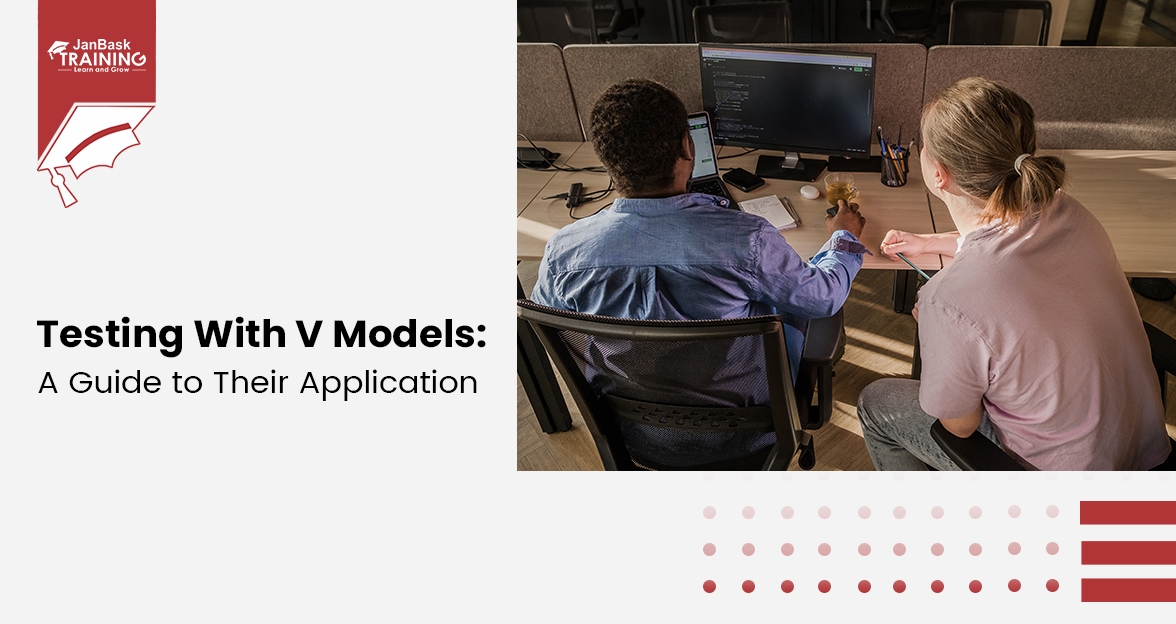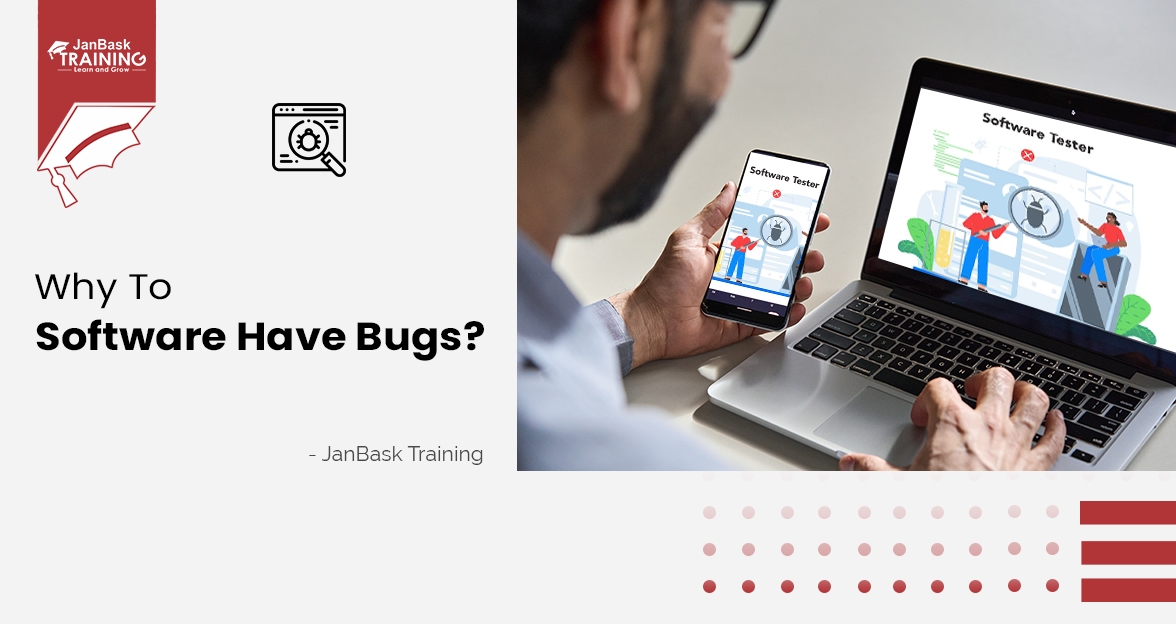What is Waterfall Model
The software development process is depicted using the waterfall model, which follows a linear sequential flow. This implies that a phase of development can only start if the one before it is finished. The stages in this waterfall model do not cross over.
The Waterfall model Approach was the first commonly used SDLC Model in software engineering to assure project success. The entire software development process is split into several phases using "The Waterfall" technique. Typically, the results of one step in this waterfall model serve as the input for the subsequent phases in turn.
Quality assurance testing is the fundamental activity focused on identifying and resolving technical issues in the software source code and evaluating the complete product usability. Through online QA training one can master software testing skills and concepts.
Different Phases of Waterfall Model

The Waterfall model's consecutive phases are as follows:
- Requirement gathering and analysis: During this stage, all potential requirements for the system that will be developed are gathered and recorded in a requirement specification document.
- System Design: In this phase, the system design is created after studying the need specifications from the first phase. In addition to describing the overall system architecture, this system design aids in identifying the hardware and system requirements.
- Implementation: The system is first constructed in discrete programmes known as units, which are then combined in the following phase, with input from the system design. Unit testing is the process of developing and evaluating each unit for functionality. In order to identify the ‘GREY AREAS’ and subsequently take remedial actions, learn about testing tools by referring to the list of software testing tools.
- After each unit has been tested: All those created during the implementation phase are merged into a system. The entire system is tested for errors and failures after integration. Automation testers demand is ever increasing, in the present job market. Refer how to become an automation tester expert guide to become a part of this lucrative career.
- System Deployment: After both functional and non-functional testing is complete, the product is either made available to customers or put on the market.
- Maintenance: Occasionally, problems arise in the client environment. Patches are published to address certain problems. Additionally, improved versions of the product are issued. To bring about these changes in the surroundings of the consumer, maintenance is performed.
The progression is perceived as flowing slowly downhill (like a waterfall) through the stages as all of these phases are connected to one another. The "Waterfall Model" gets its name because the following phase doesn't begin until the prior phase's established set of goals have been met and it has been approved. Phases do not cross over in this model.
Every piece of software generated is unique, and depending on internal and external circumstances, a proper SDLC strategy must be used. Also every project needs a QA tester and refer the QA software tester career path, for a successful career growth. The following are some scenarios when the waterfall paradigm is most useful:
- The requirements are extremely clearly defined, documented, and fixed.
- Definition of the product is steady.
- Understanding technology means it is not dynamic.
- No unclear criteria exist.
- To support the product, there are many of resources accessible with the necessary knowledge.
- The undertaking is brief.
The ability to departmentalize and exercise control is one of waterfall development's benefits. A product can move through the stages of the development process model one at a time by setting deadlines for each step and following a timetable.
Conceptualization is followed by design, implementation, testing, installation, troubleshooting, and finally operation and maintenance in the development process. The stages of development are carried out in a certain order. There’s a great demand for software test engineers to resolve the security & performance gaps. highly skilled & certified software test engineers earn lucrative salaries. Want to know how much is the software test engineer salary? Click here.
Pros and Cons of Waterfall Model
The following are some of the Advantages of waterfall mode:
- Straightforward and simple to us
- Because of the model's rigidity, it is simple to manage. Specific deliverables and a review procedure are included at each phase.
- Each phase is handled and finished separately.
- Works effectively for smaller projects with clearly defined criteria.
- There are distinct stages.
- Easily understandable benchmarks
- Simple to organise assignments
- Results and processes have been well-documented.
- The model is stiff, making it easy to control as long as you just visit one phase at time.
- ·Each phase includes a review process and certain deliverables.
- The waterfall model's phases are clearly identified.
- Because larger projects tend to be more complicated, the waterfall paradigm works best for smaller projects with well defined needs and a high likelihood of risks and uncertainties.
- Processed and finished one phase at a time.
- Since it goes through phases that are easy to comprehend and explain, it addresses many difficulties.
- The procedure and the results are both meticulously documented.
- Creates the habit of defining before designing.
After gaining the relevant industry training, if you’re preparing to crack the QA in interview in the first attempt, then our all-inclusive QA testing interview questions and answers guide will definitely help you.
Waterfall development has the drawback of not allowing for a lot of reflection or correction. It is quite challenging to go back and fix something that wasn't carefully thought out or documented during the idea stage after an application has entered the testing phase.
The following are the Disadvantages of waterfall model:
- It takes till the end of the life cycle for any functioning software to be generated.
- Risk and uncertainty are quite high.
- Unsuitable as a model for intricate and object-oriented designs.
- Ineffective paradigm for continuing, protracted projects.
- Not appropriate for projects where there is a moderate to high probability of requirements changing. So, with this process model, risk and uncertainty are considerable.
- It is challenging to gauge development within phases.
- Unable to adapt to changing needs.
- The project life cycle can be terminated by changing the scope.
- Integration is completed in a "big-bang" at the very end, which prevents the early detection of any business or technology bottlenecks or issues.
- If the requirements change or are adjusted in the middle of the model's implementation, there is a significant risk and degree of uncertainty.
- As the flow proceeds in a series without interruption, returning to the phase becomes quite difficult.
- Not suitable for projects with a moderate to high risk of requirement changes, as the outcomes can worsen.
- Since no prototype may be shown during the intermediate phases, the ultimate result is delivered when the waterfall model's flow is complete.
- The client's helpful suggestions cannot be included in the period of continued development.
Need of Waterfall Model
The following situations call for the adoption of waterfall methodology:
- The requirements don't change very often.
- Application is simple and substantial.
- Project's requirements are crystal clear, and the environment is steady.
- The technology and tools are steady and not dynamic. As the majority of businesses are switching to Selenium automation because for various reasons, there’s high demand for a selenium tester in the job market. Go through selenium tester roles and responsibilities and give wings to your dream career.
- There are trained personnel and resources.
Automation testers are one of them, and to become one, join automation testing course.
What is SDLC Waterfall Model
- Team members must be on the same page when it comes to when and what to do when working on a software project. Otherwise, anarchy and project failure would result. Each phase's entrance and departure criteria are described in a software life cycle model. Gone are the days when products, applications or softwares were tested once used to get completed. And nowadays companies perform testing at almost every stage of the SDLC. An incredible automation testing tutorial will help you learn its nuances in depth.
- Only if the stage-entry conditions are met may a phase start. Without software life cycle models, it is challenging for project managers to monitor the evolution of their projects. Different models, including the iterative model, spiral model, Waterfall Model, V model, and big bang model are defined as part of the SDLC process to aid them in this process.
- You will encounter the Waterfall Model, the first methodology to be established as a component of software development, in this article. After learning how the Waterfall Model operates, you may explore each of its phases in more detail. You will also learn where this paradigm falls short and where it works well.
Terminology
Waterfall Model in Software Engineering
- Felix Torres and Herbert D. Benington gave the first presentation addressing the application of such phases in software engineering on June 29, 1956, at the Symposium on Advanced Programming Methods for Digital Computers. The creation of software for SAGE was the topic of this lecture. The article was reissued in 1983 with an introduction by Benington clarifying that the phases were intentionally organised according to the specialisation of duties and pointing out that the process was not really carried out strictly top-down but rather depended on a prototype.
- Although the name "waterfall" is not used in the publication, Winston W. Royce's 1970 article contains the first official full graphic of the process that would subsequently be known as the "waterfall model." He also believed that it had serious faults because testing was only done at the conclusion of the procedure, which he described as "risky and invites failure." The remainder of his paper provided five stages that, in his opinion, were required to "remove most of the development risks" connected with the waterfall approach as it was originally designed..
- Although Royce's five extra phases, which included creating thorough documentation at various stages of development, were never widely adopted, his flowchart of what he saw to be a defective method served as the basis for the "waterfall" technique.
- The word "waterfall" may have first appeared in a 1976 Bell and Thayer study. This approach was encapsulated in the 1985 DOD-STD-2167A regulations for working with software development contractors, which demanded that the contractor "implement a software development cycle that comprises the following six phases: Software Requirement Analysis, Preliminary Design, Detailed Design, Coding and Unit Testing, Integration, and Testing."
- The first Process Model to be introduced was the Waterfall Model. The term "linear-sequential life cycle model" is also used to describe it. It is incredibly easy to use and comprehend. There is no overlap between stages in a waterfall model; each step must be finished before the subsequent phase can start.
- The first SDLC methodology for software development was the waterfall model.
Examples of Waterfall Model
Enterprise applications including Customer Relationship Management (CRM) systems, Human Resource Management (HRMS), Supply Chain Management Systems, Inventory Management Systems, Point of Sale (POS) systems for Retail chains, etc. were once developed using the Waterfall paradigm.
Up to the year 2000, the waterfall approach was extensively utilised in the creation of software. Even after the 2001 publication of the Agile Manifesto, many organisations employed the Waterfall methodology up to the past ten years.
Nowadays, depending on the needs of the project, the majority of projects use Agile Methodology, an iterative model, or another methodology.
Applications created using the Waterfall Model in the past, such as CRM systems and supply chain management systems, would often take a year or longer to construct.
Large-scale corporate systems that took two to three years to design yet were obsolete when they were finished are examples of how technology has changed. This was due to a number of factors.
- When the programmes in C, C++, etc. were built, newer (relatively speaking) languages like Java,.Net, etc. would replace them with web-based capabilities.
- The risk of developing an application over a number of years is increased by factors like more competitors entering the market, more affordable alternatives becoming available, better functionality using newer technologies, changes in customer requirements, etc. even if the application was created using a new technology.
There are some places, nonetheless, where the waterfall concept is still recommended.
- Consider a system where one or more deaths might occur from a system failure and where human life is at stake.
- Such errors might result in incarceration for individuals responsible in other nations.
- Imagine a system where the safety of people came above concerns about time and money.
The Waterfall model was the recommended method under these circumstances.
- The Waterfall development methodology was used in numerous businesses to create Department of Defense (DOD), military, and aerospace programmes.
- This is as a result of the stringent guidelines and criteria that must be followed.
- In these sectors, project deliverables are spelled out in great detail in contracts, and needs are clearly known in advance.
- The Waterfall approach was often seen to be consistent with the government's strict control requirements as well as DOD Agencies' procurement procedures.
Having said that, organisations like Space X and others are using the Iterative model and Agile methodology, which is disrupting even these industries.
Other industries that have utilised the waterfall model include banking, healthcare, nuclear facility control systems, and space shuttles.
QA Software Testing Training
- Personalized Free Consultation
- Access to Our Learning Management System
- Access to Our Course Curriculum
- Be a Part of Our Free Demo Class
Conclusion
One of the first models used in software development was the waterfall model, which has grown in popularity due to its clear definition of each stage and informational logic.

















